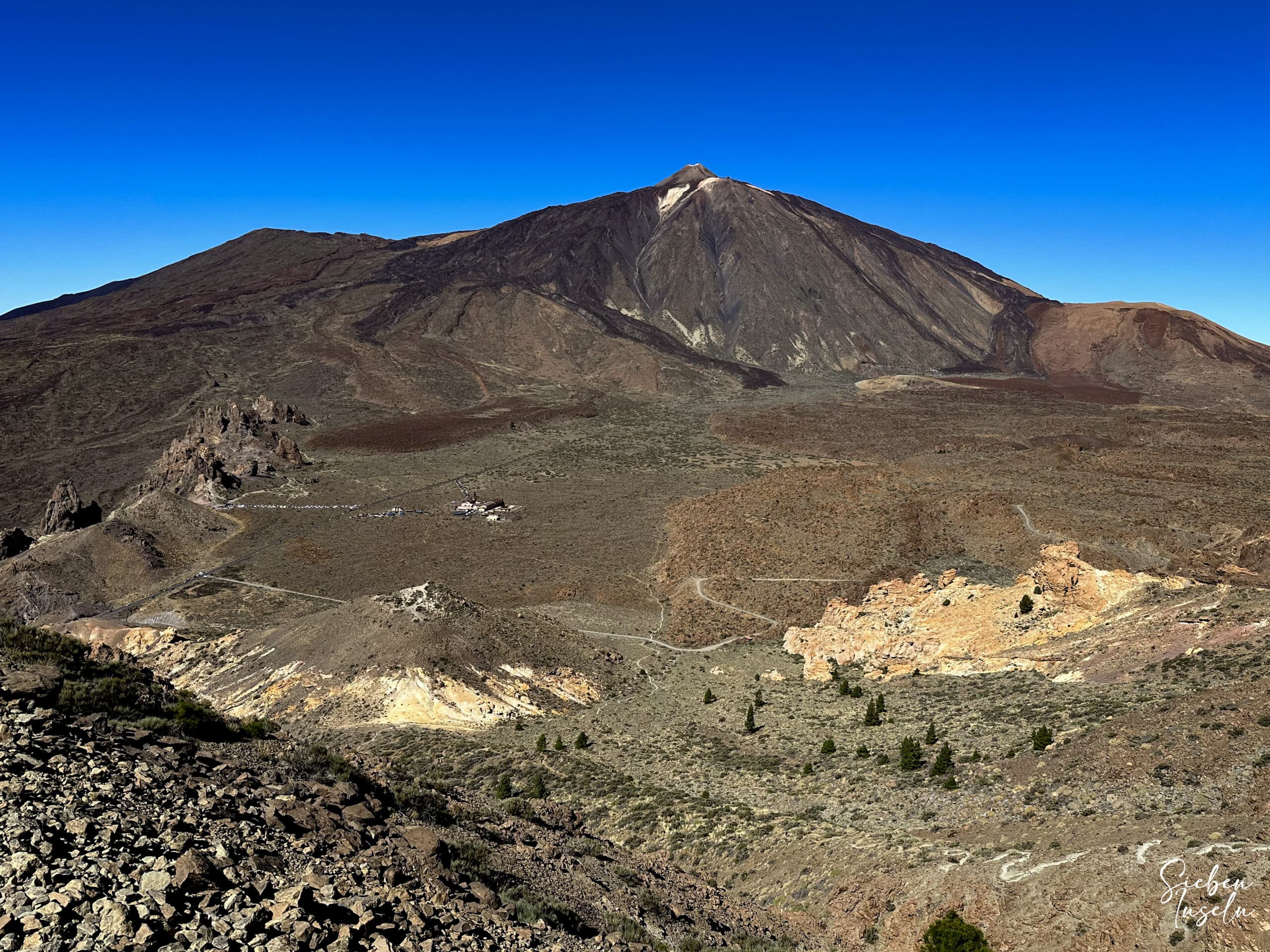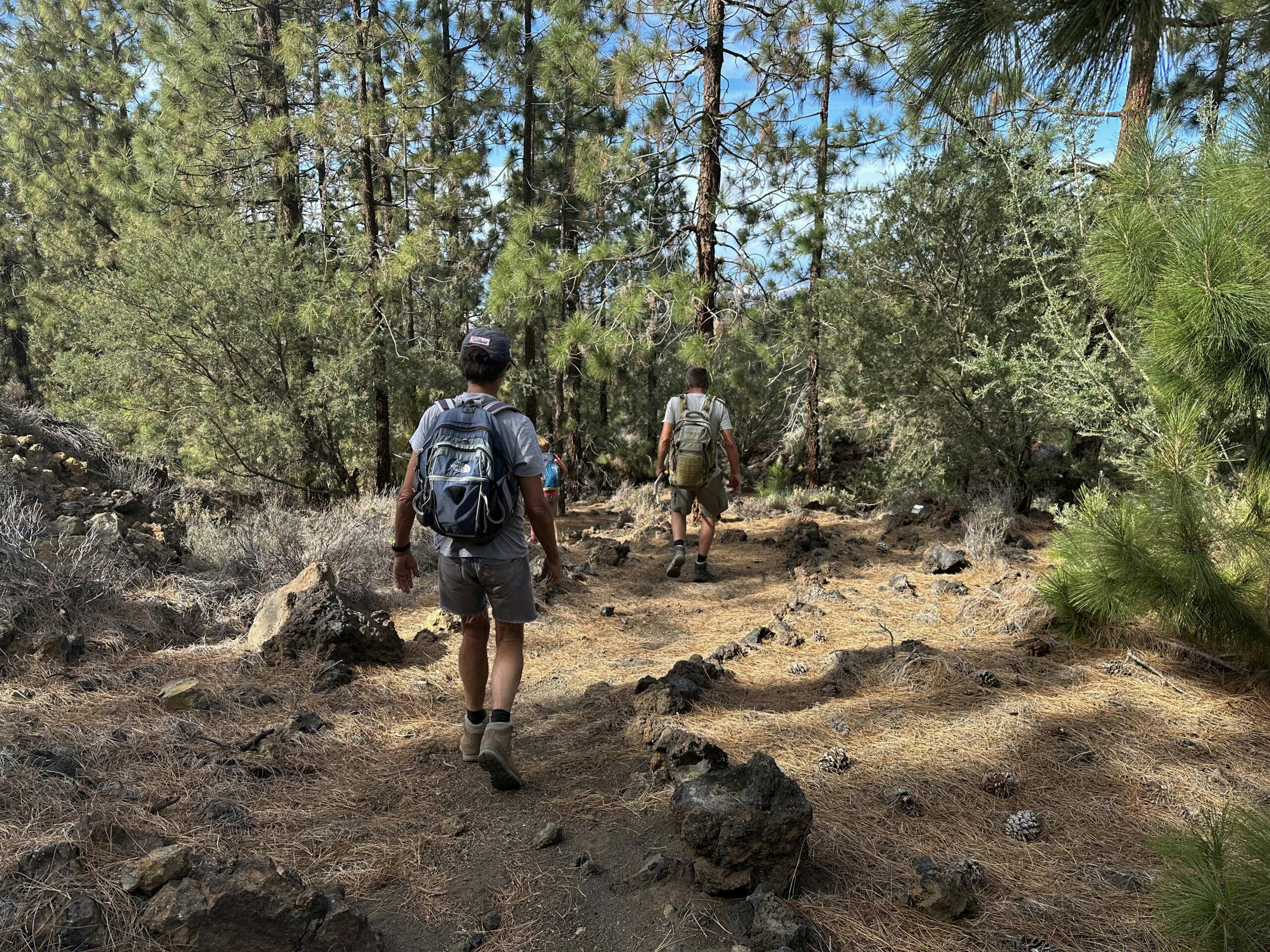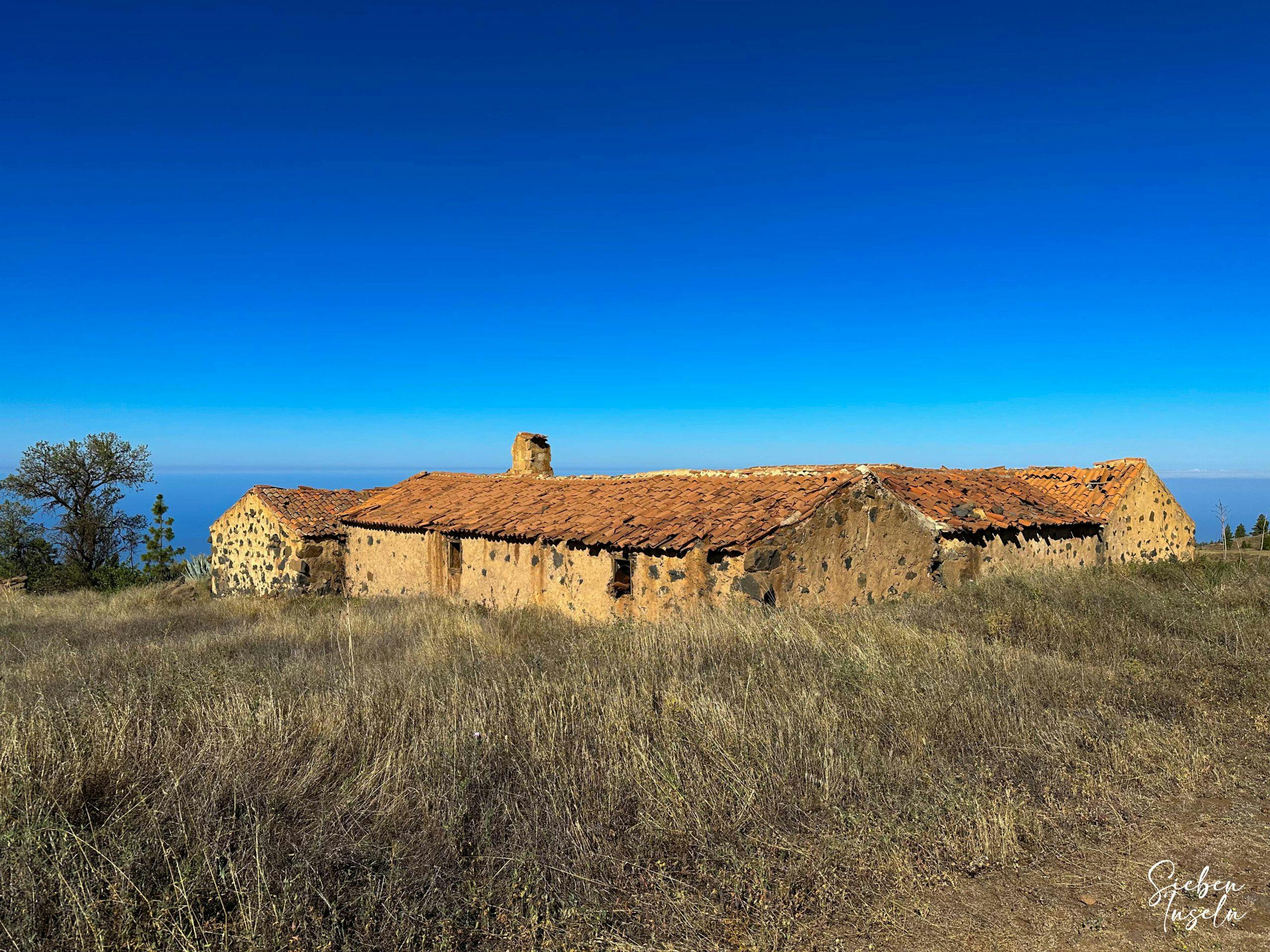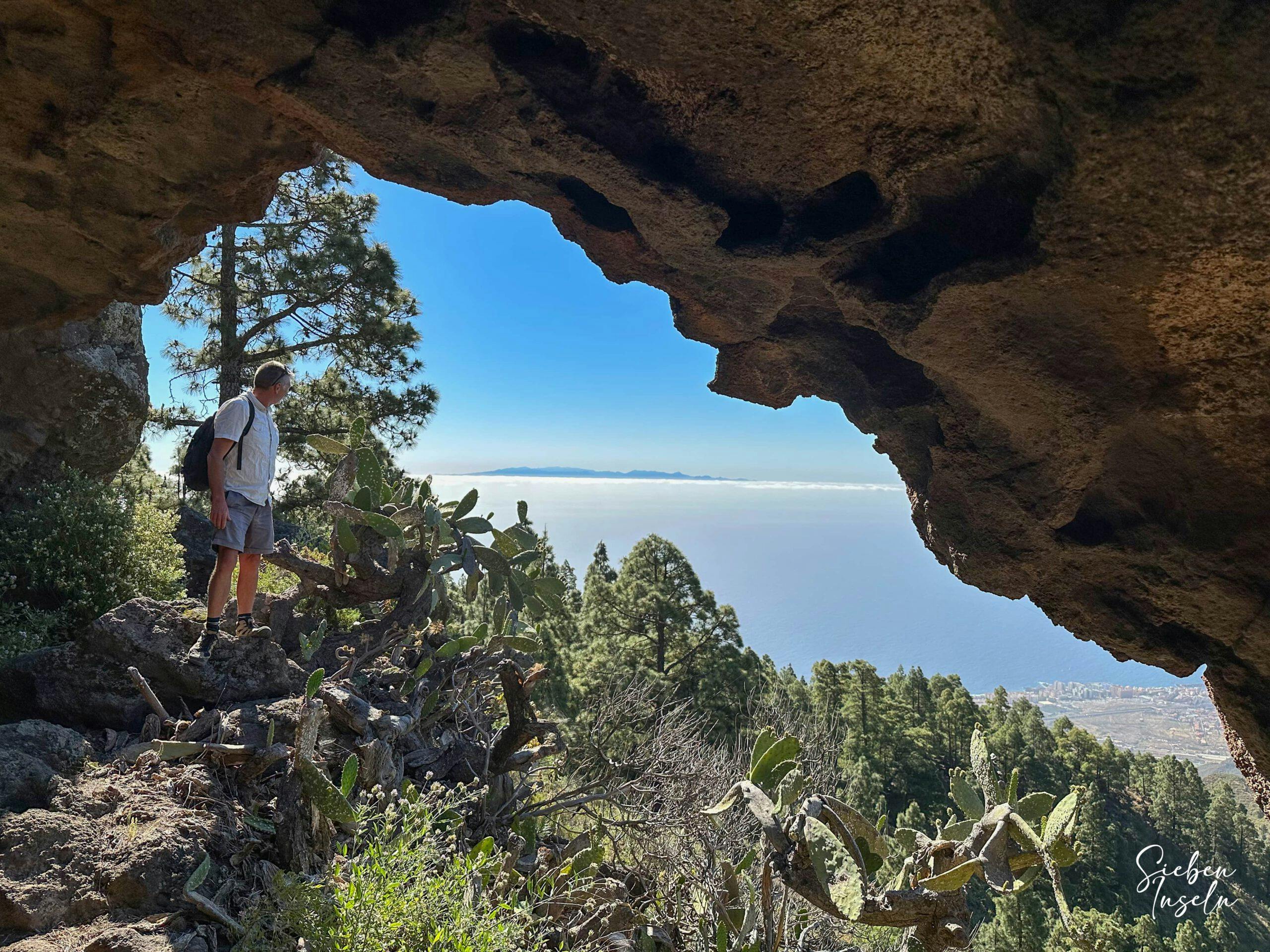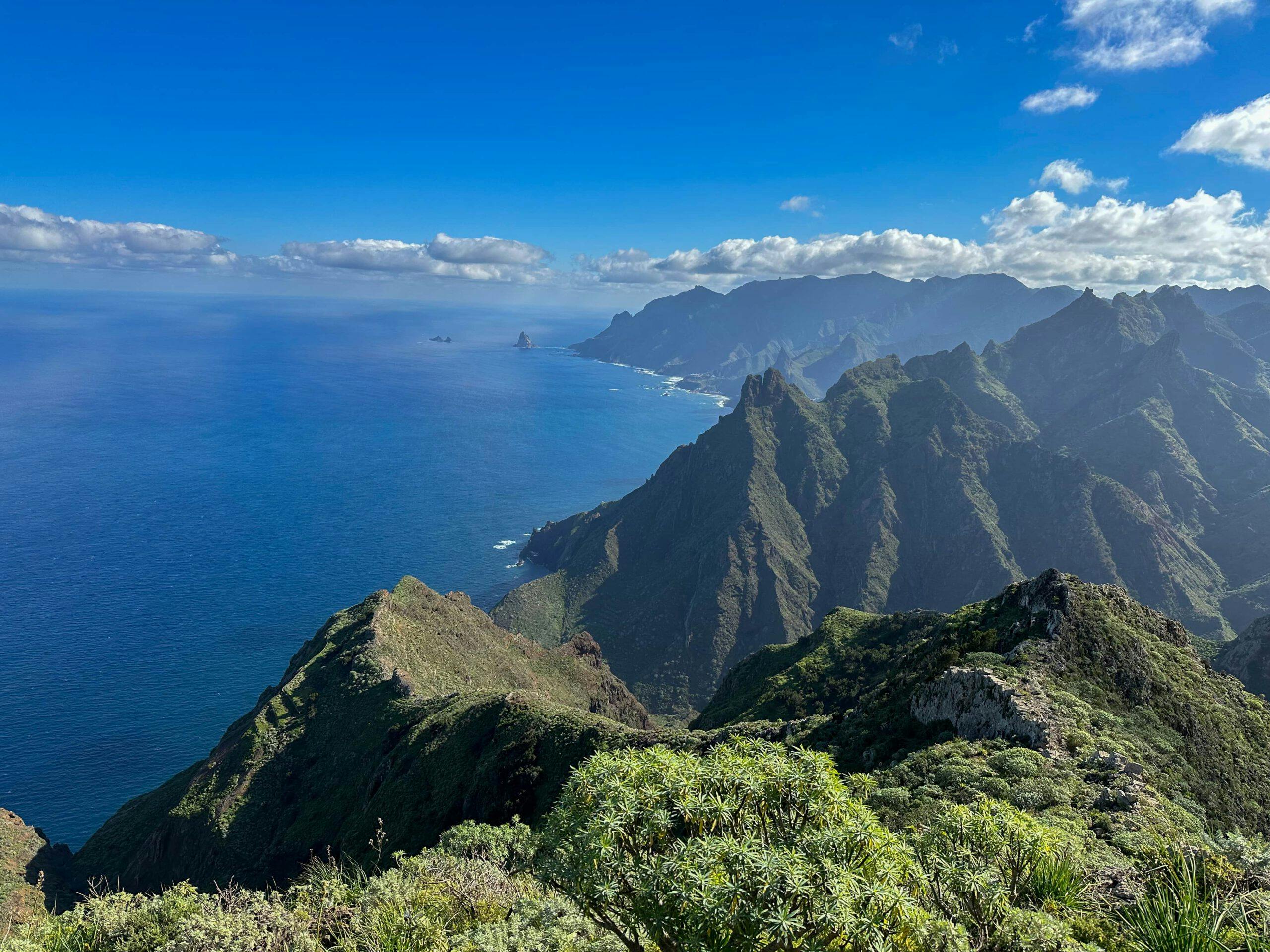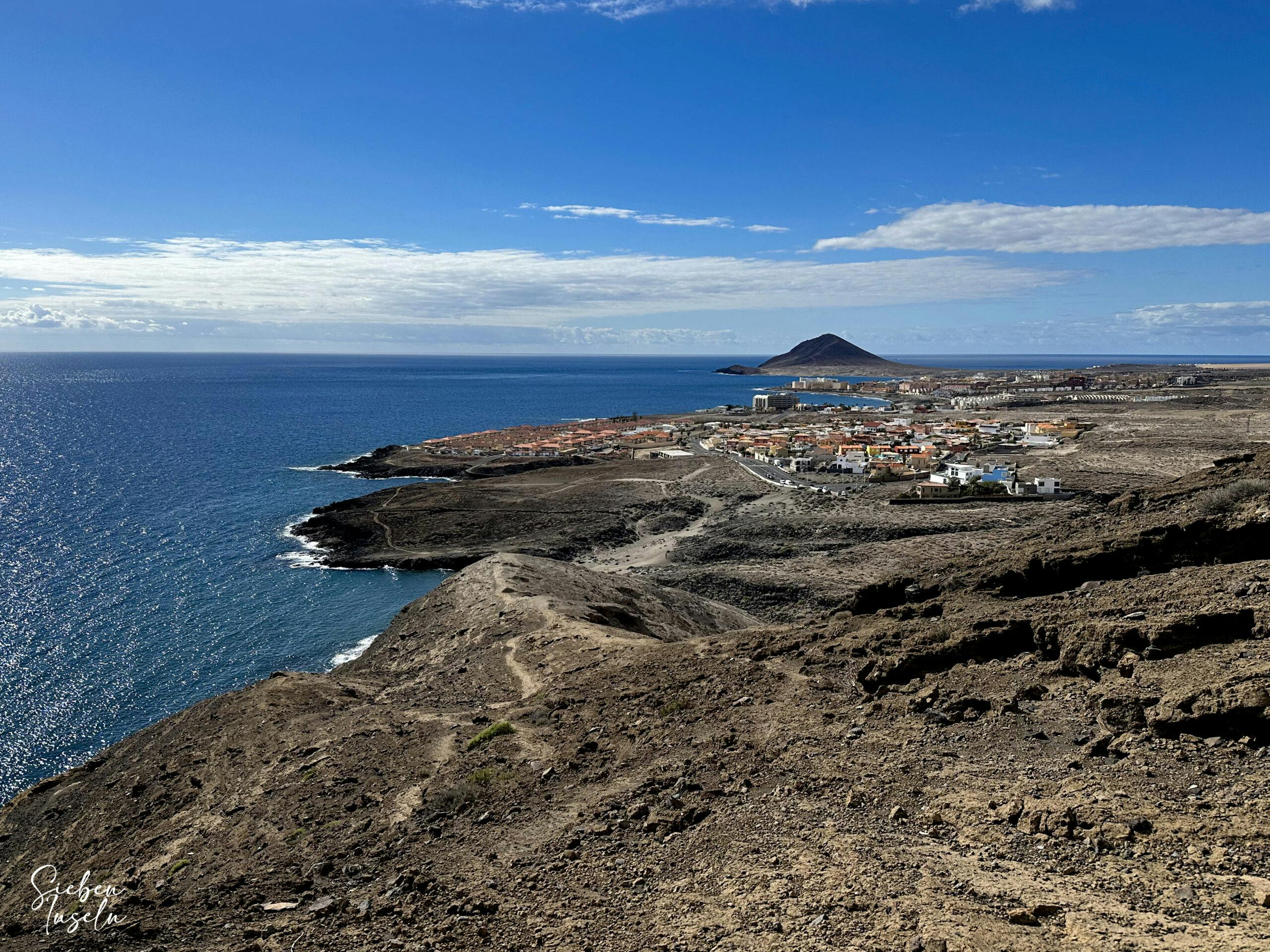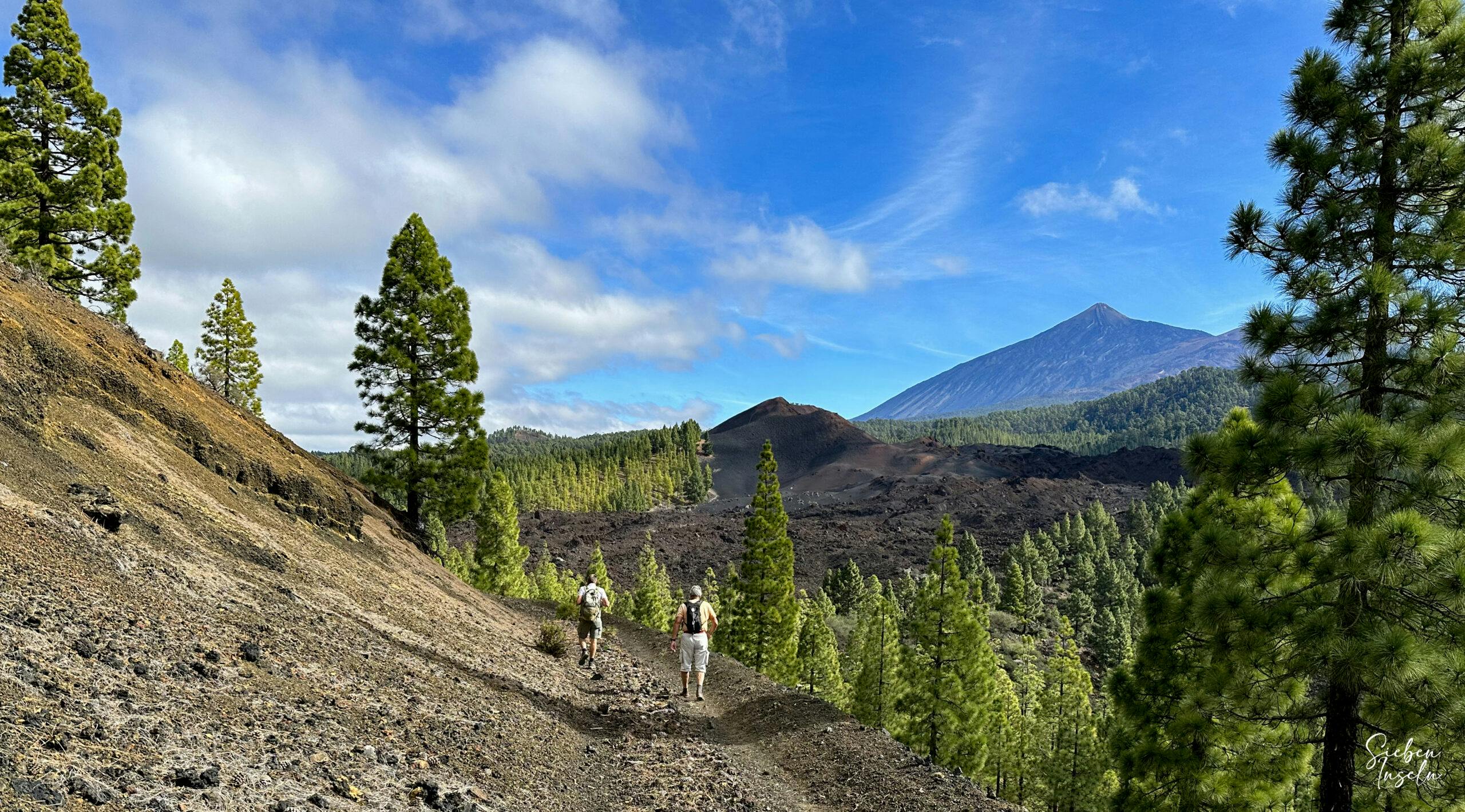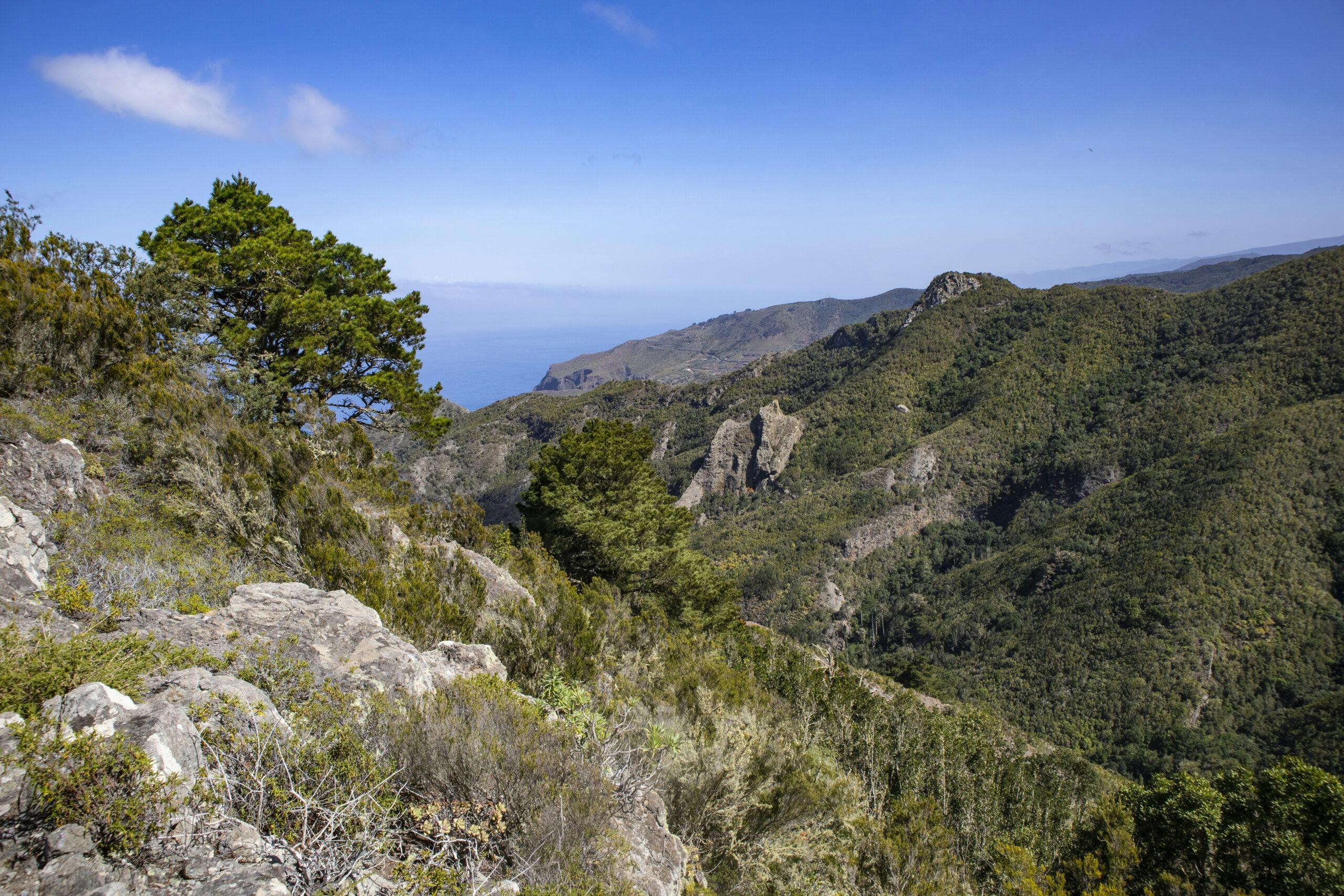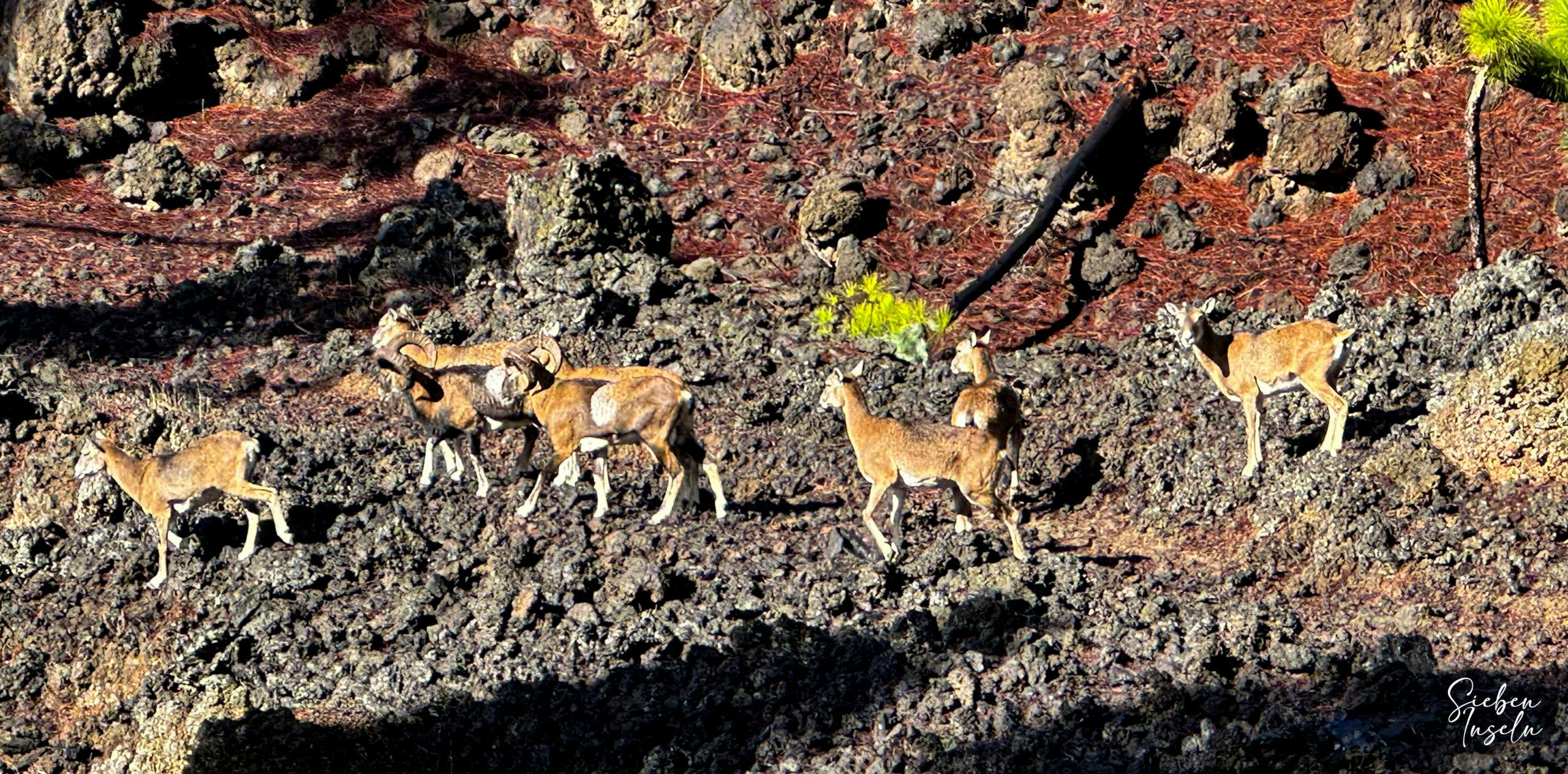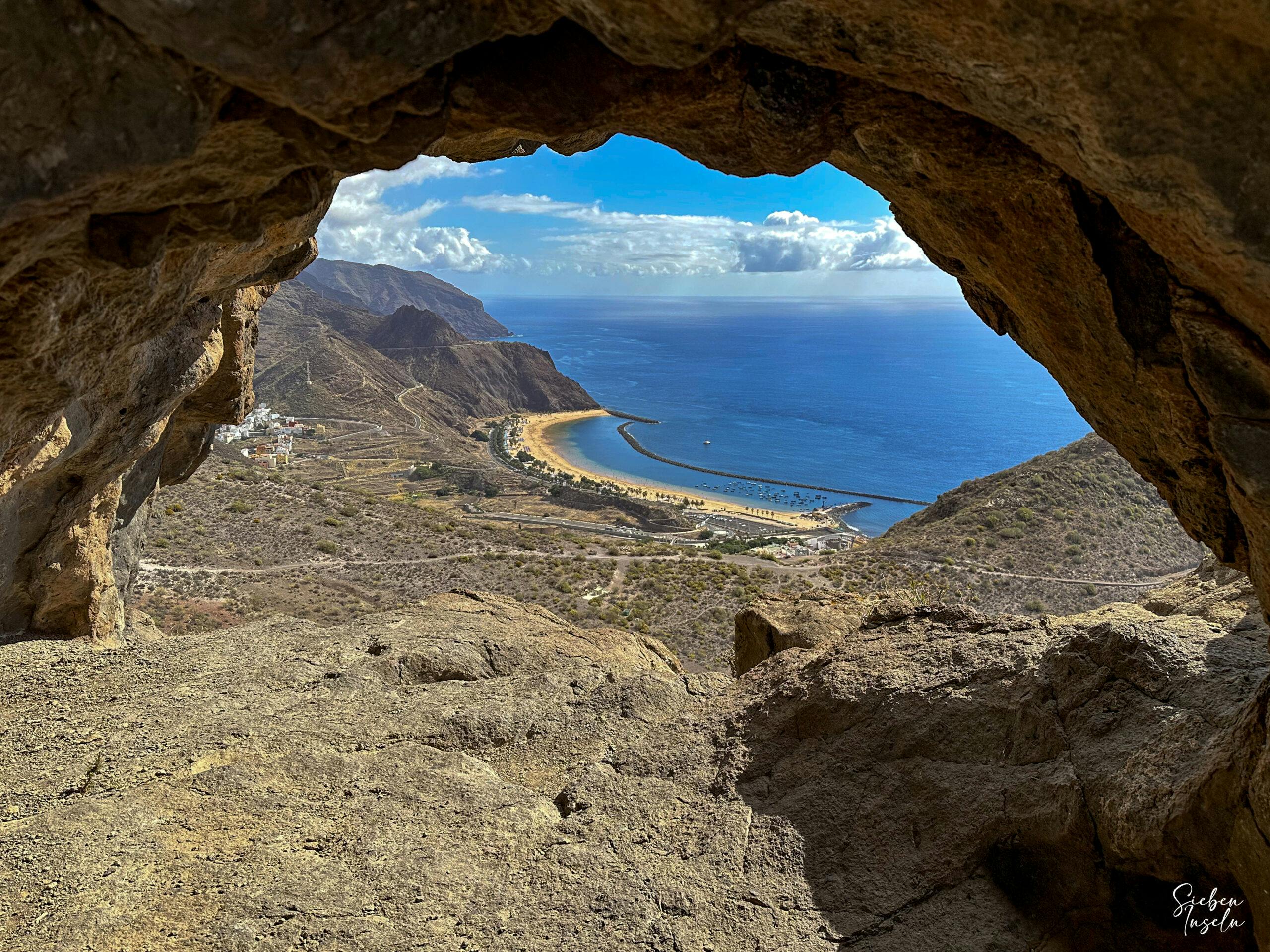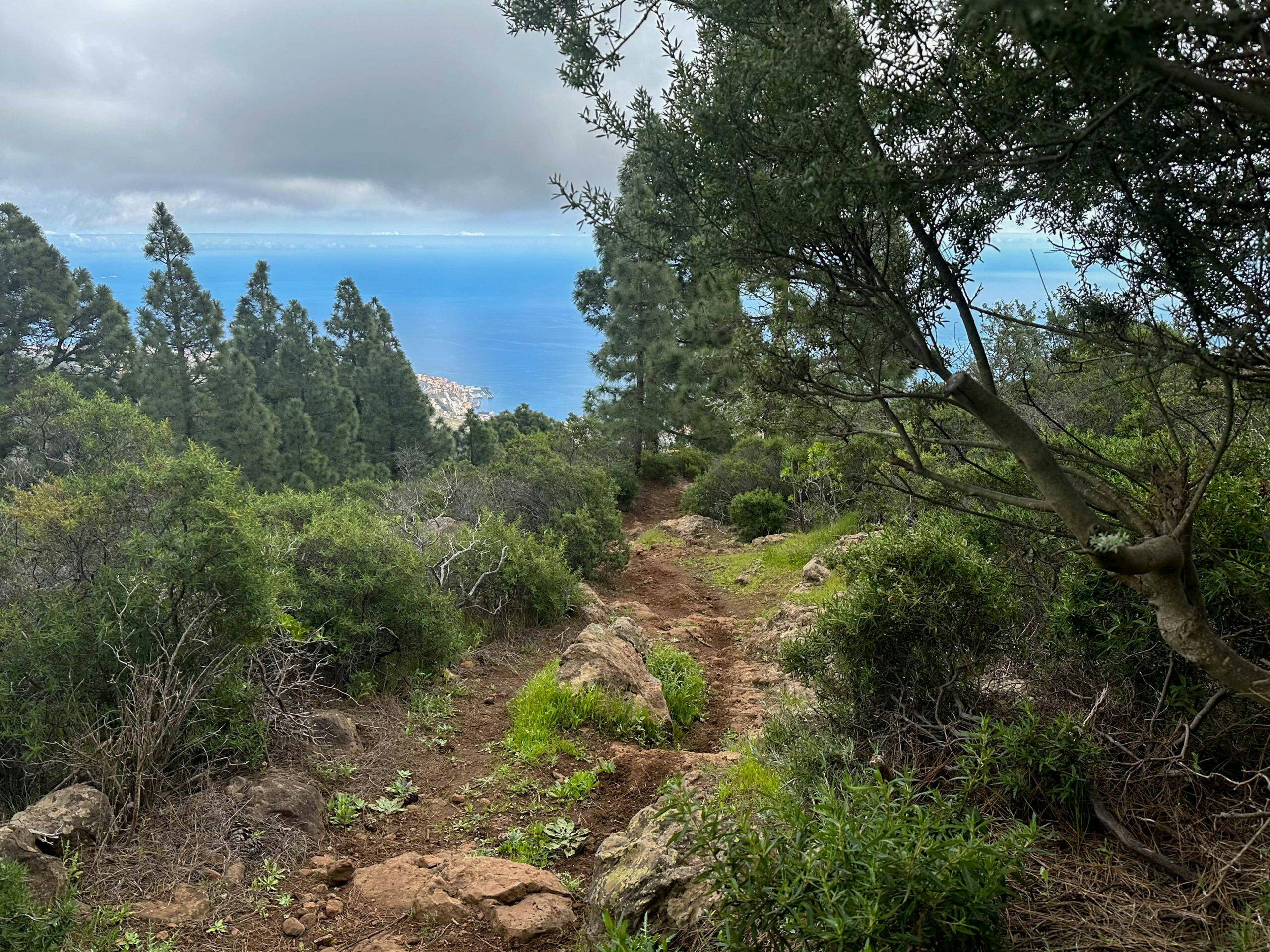Tenerife - location, facts and figures
The volcanic island of Tenerife, whose inhabitants are called Tinerfeños, is the largest of the seven Canary Islands. Like them, it belongs to Macaronesia. Macaronesia is Greek and means blissful islands. This is an inviting name for the islands not far from the African coasts. Because the Canary Islands belong topographically to Africa. Tenerife itself lies 288 kilometres off the coast of Morocco and Western Sahara. The length of the island amounts to 83.3 kilometers, the width up to 53.9 kilometers and the surface exhibits 2034.38 square kilometers. With almost one million inhabitants, Tenerife is the most populous island in Spain. The capital is Santa Cruz de Tenerife. There is a university in La Laguna in the north.
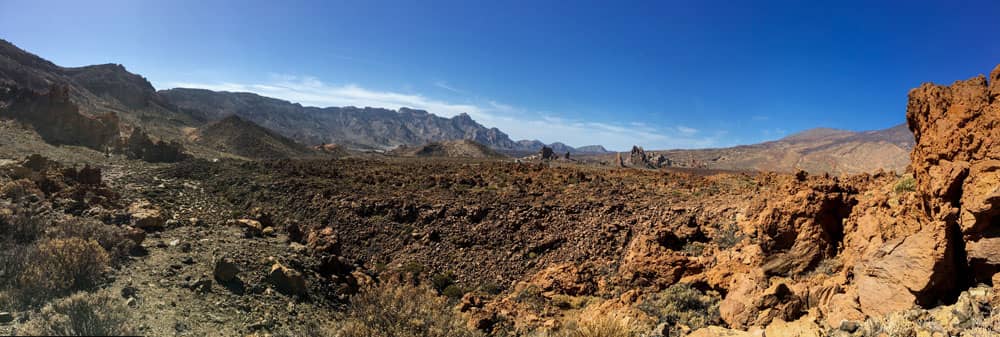
Tenerife - panorama - caldera
Landscape, temperatures and vegetation
Tenerife combines numerous landscapes. The south is rather barren. And the fertile north is extremely green. In the height there is the bizarre volcanic landscape around the National Park Teide. The temperatures on Tenerife are mild all year round, whereby there are already "small" differences between north and south side of the island as well as between the different heights. Of all seven Canary Islands, Tenerife is the largest and the most diverse.
Thus, the vegetation is also varied. Some plant species only exist on the Canary Islands or on Tenerife. The forests consist mainly of the Canary pine with its long needles and roots. You can see wolf's milk plants in the rather dry south. There is the famous viper's head, dragon trees and the Tajinasts, who put red spots of colour into the landscape in May.
There are several protected areas on Tenerife. Since 1988, the entire island has been a sun protection area, which is of particular benefit to the Observatorio del Teide near the Teide.
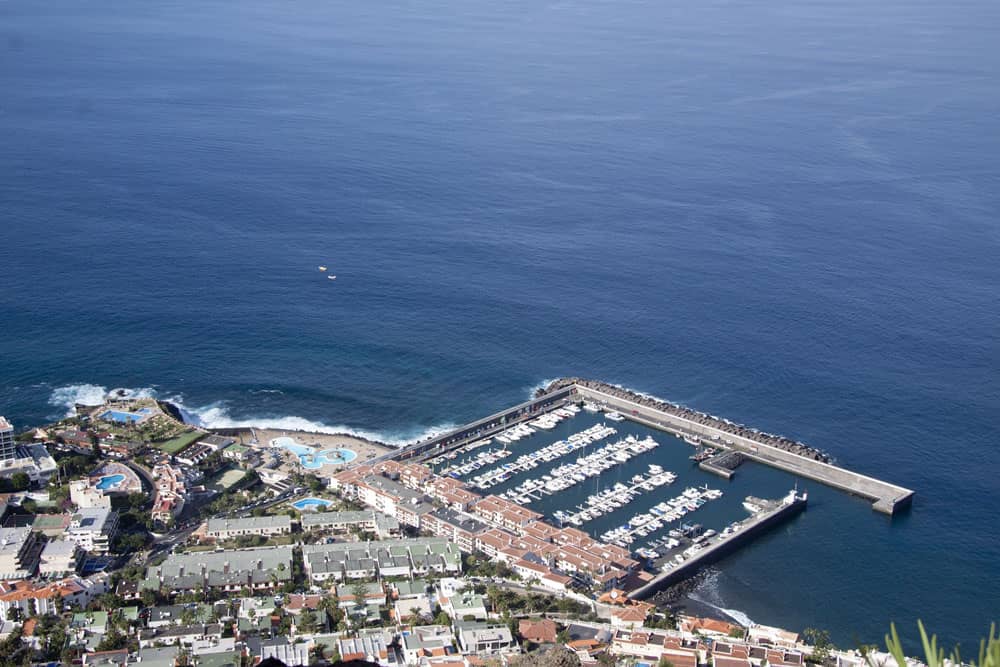
the habour of Los Gigantes
Economy, tourism and island festivals
Tenerife has been a holiday island since the end of the 19th century. At first only a few tourists came. Today Tenerife lives from tourism, which continues to increase constantly. The main tourist centres are the regions in the south around Los Christianos and in the north around Puerto de la Cruz. In addition to tomatoes and wine, mainly potatoes and bananas are cultivated agriculturally on Tenerife.
The most famous festivals of the island are the Carnival in Santa Cruz de Tenerife and in other places, the feast of the Holy Virgin of Candelaria on 2 February, the Noche San Juan on 23 June 24 June, the Assumption of the Virgin Mary on 15 August and the Fiestas del Santísimo Christo de La Laguna on 14 September.
Popular sights in Tenerife
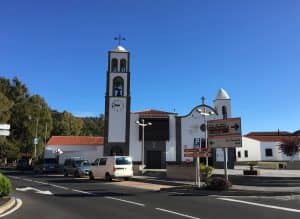
chirch of Santiago del Teide
In the north of Tenerife, Puerto de La Cruz attracts with its famous botanical garden. Nearby is the historic Casa Hamilton, an old waterworks. Also the old town of Orotava is worth seeing, especially if carpets are laid there from flowers. In the east of the island a visit to the Basilica of Candelaria is recommended. But beside the big cities, a visit of the smaller communes as Icod de los Vinos with the ancient dragon tree or Garachico with its many pretty colourful houses is also worthwhile. Also the small idyllically situated place Masca is always worth a visit.
Tenerife - amusement park or nature
Those who like amusement parks should visit the Siampark, the Jungle Park or the famous Loropark. And if you want to watch dolphins and whales in the great outdoors, you can do so between Los Christianos and Los Gigantes.
Whether with or without hiking should not be missed a visit to the crater landscape of the Teide National Park (World Heritage Site of UNESCO), where you can take a look at Spain's highest mountain, the Teide. Also worth seeing are the Anaga Mountains with the Mercedes Forest (Biosphere Reserve), the Orotava Valley, the Masca Gorge and the rocks of Los Gigantes.
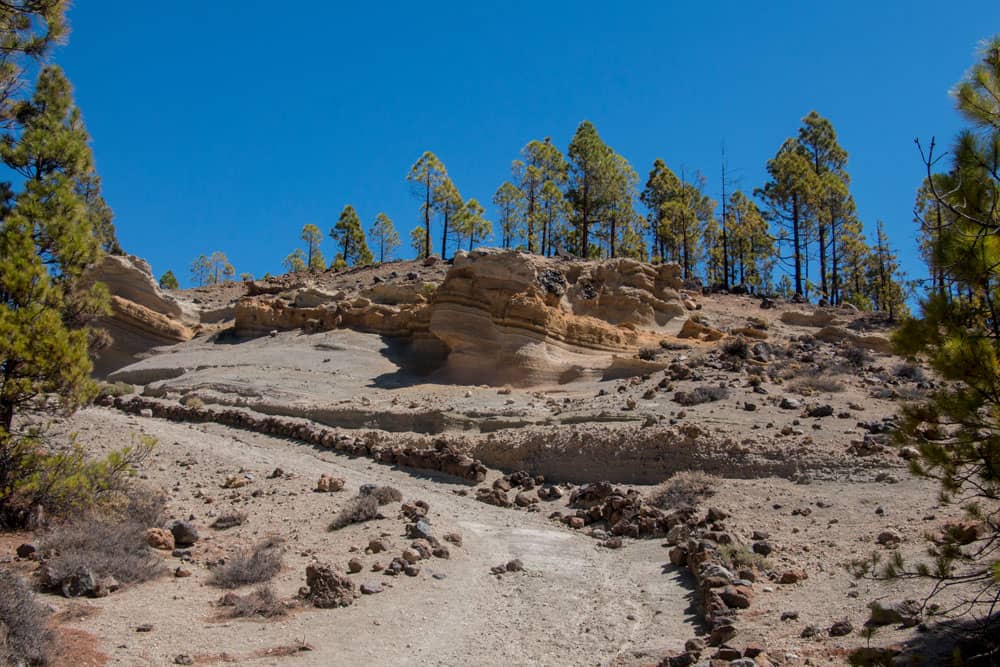
Paisaje Lunar
The versatile hiking paradise of Tenerife
But besides all these sights, Tenerife has much more to offer. Due to the impressive nature and the many different climate zones, the island is a varied hiking paradise. You can do coastal hikes along the coast. And in every altitude up to just over 3,700 altitude meters high peaks of the volcano Teide there are hikes of every length and for every taste.
Hiking in the Anaga Mountains
In the north the Anaga mountains invite you to hike. There you can walk in the Mercedes forest through old laurel forests and cloud forest. There are various hiking tours in lonely gorges and on the mountain ranges with breathtaking views. One of my favourite tours there is the round tour on the Chinamada mountain ranges. But also in Chamorga there are wonderful hikes.
Hiking on the Teide and in the Teide National Park
If you are looking for the challenge, you can find it on the island centre of Tenerife. There lies the highest mountain of Spain, the volcano Teide with its 3.718 meters of altitude. You can climb it in a challenging night hike and experience the longest shadow of Europe from up there at sunrise.
Right next to it you will find the Pico Viejo with its 3,135 m altitude and the third highest peak of the island, the Guajara with 2,718 m altitude. But the whole national park around the Teide attracts with many different varied hikes. For example, there is the interesting circular path through the Caldera via the Sanatoriumsweg. Gemstones, interesting rock formations, endless expanses and black lava boulders offer an unforgettable experience.
Hiking in the Teno Mountains
The third large hiking area on Tenerife is the Teno Mountains. There you will find the famous Masca Gorge. But beside Masca there are countless other hikes in lonely Barrancos and over steep mountain ranges. The landscape and nature convince from the cliffs of Los Gigantes to the Risco Steig with a beautiful natural variety.
All in all Tenerife convinces visitors and especially hikers with its variety of culture, demanding high-altitude hikes under the snow-covered Teide up to lonely bathing bays. Probably it does not remain with a visit. And if you need more information about Tenerife, you can find it here in
Rainer Hasonovic's online travel guide.

